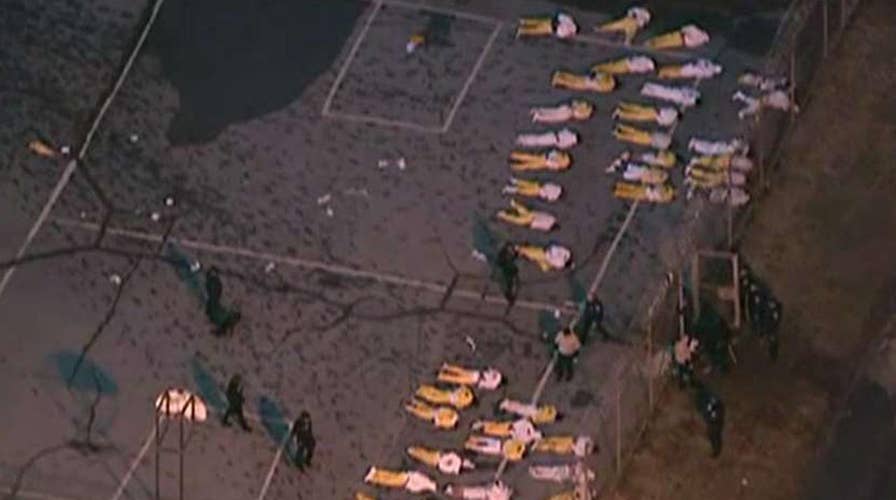Prison guard found dead as Delaware hostage situation ends
Siege at corrections facility comes to end after inmate uprising
A building at Delaware's maximum-security prison that was the site of a deadly inmate riot and hostage-taking last year will be torn down, officials said Monday.
Demolition of the C Building at James T. Vaughn Correctional Center is expected to begin this fall, Department of Correction officials said in a news release.
The building has been vacant since February 2017, when inmates rioted, taking three staffers hostage and killing correctional officer Steven Floyd.
"The building is a constant reminder of the senseless, brutal murder of one of one of DOC's dedicated public servants - Lieutenant Floyd," said Gov. John Carney. 'To remove the building from the complex will aid in mental and emotional health of officers who work at JTVCC every day. It's the right thing to do."
Officials said that with authorization and funding from last year's capital budget, DOC hired engineering firm TetraTech to assess the cost to demolish C Building. Officials funding for the demolition was approved in this year's capital budget.
Last year's capital budget included a $1 million reserve in contingency funding for repairs, rehabilitation, and/or reconstruction at Building C. The current capital budget includes $2 million in similar funding, but neither bill mentions demolition.
DOC spokeswoman Jayme Gravell refused to explain Monday when and how the decision to demolish the building was made.
The announcement came one day before a scheduled news conference, at which officials plan to release a final report detailing progress in the Department of Correction's efforts to implement more than 40 recommendations from an independent review team that investigated the riot and the events leading up to it.
The review team found that prison administrators dismissed warnings of trouble brewing at the prison in the days leading up to the riot, including a warning from Floyd that some inmates should be moved to another building for security reasons. The request was dismissed by higher-ranking officials.
Investigators suggested that the dismissal of the security warnings was indicative of a prison plagued by mismanagement, a lack of communication, a culture of negativity and adversarial relationships among prison staff, administrators and inmates.


